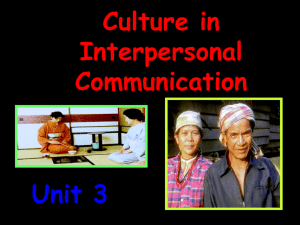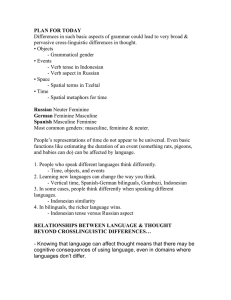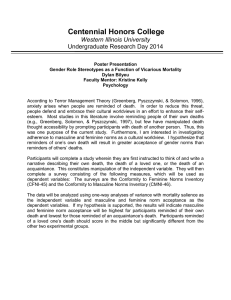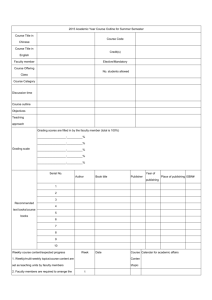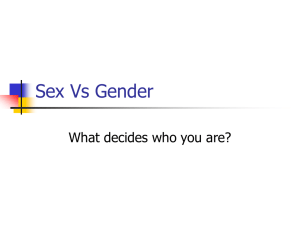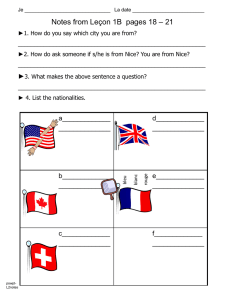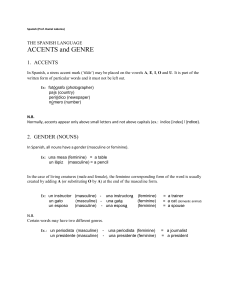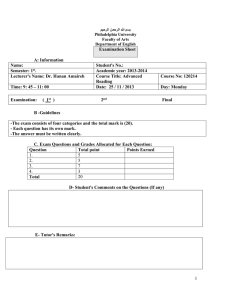Ch. 10 - Paws.wcu.edu.
advertisement
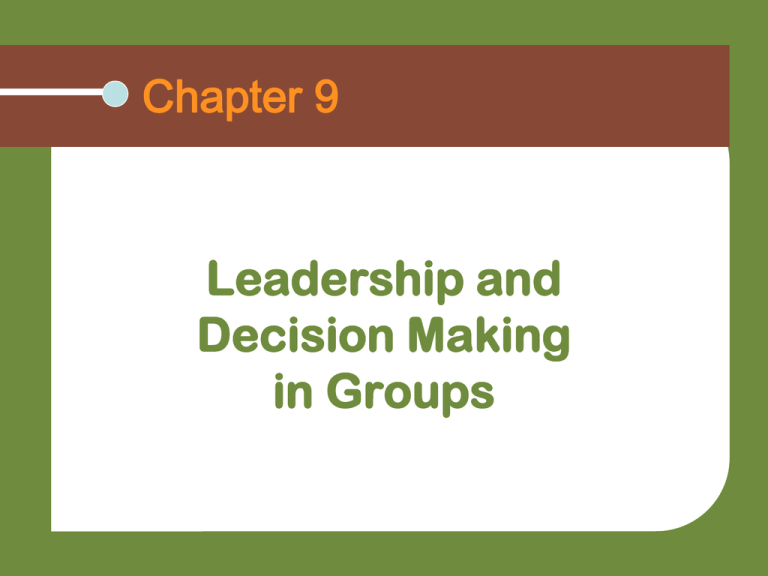
Chapter 9 Leadership and Decision Making in Groups Chapter Objectives • Understand what makes an effective leader • Describe leadership styles • Identify how culture affects leadership • List forces that shape a group’s decisions Chapter Objectives • Explain the six-step group decision process • Show how effective leadership is crucial for good communication in meetings • Know the three aspects of assessing group performance Understanding Group Leadership Leadership is the ability to influence other’s behaviors and thoughts toward a productive end. **Influence comes from a person’s power or from group members’ admiration and respect for the individual. Understanding Group Leadership • Five Sources of Power – Legitimate power – Coercive power – Reward power – Expert power – Referent power Understanding Group Leadership • Shared Leadership – Members feel more satisfied – Members are more motivated to perform – Group is more likely to achieve its goals Understanding Group Leadership • Leadership Styles – Directive – Participative – Supportive – AchievementOriented Understanding Group Leadership • Competence and Ethics Skilled leaders are: • Flexible • Accountable • Credible • Competent communicators Understanding Group Leadership • Competence and Ethics Unethical leaders are: • Controlling • Accustomed to using bullying, criticism, name-calling, gossip, personal attacks, and threats Culture and Group Leadership • Masculine and Feminine Leadership – Masculine style (emphasizing control) may not be effective – Feminine style looks to needs of group members • Context and Power Distance The extent to which less powerful group members expect power to be distributed unevenly. Decision Making in Groups • Cognitive forces Group members’ thoughts, beliefs, and emotions • Psychological forces Group members’ personal motives, goals, attitudes, and values • Social forces Group standards for behavior which influence decision making Decision Making in Groups • The Problem-Solving Process – Identifying the problem – Analyzing the problem – Generating solutions – Evaluating and choosing solutions – Implementing the solution – Assessing the results Leadership in Meetings • Planning Meetings Effectively – Justify the meeting – Clarify the purpose and participants – Set an agenda Leadership in Meetings • Managing Meetings Effectively – Arrive prepared – Keep the group focused – Summarize periodically – Keep an eye on the time – Manage conflict – Follow-up Leadership in Meetings • Using Technology in Meetings – Face-to-face teams perform better initially – Virtual teams are better at brainstorming – Face-to-face teams are better at compromise Evaluating Group Performance • Informational Considerations – Is the group on task? – Are all group members participating? • Procedural Effectiveness Are group activities & communication coordinated & shared? • Interpersonal Performance Are the relationships among group members effective?

